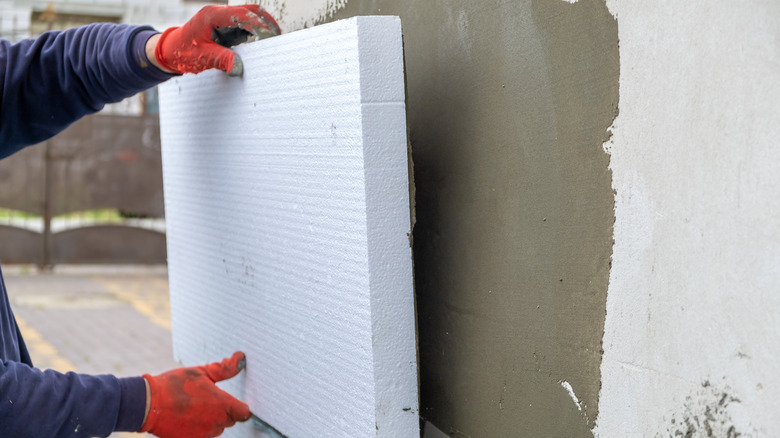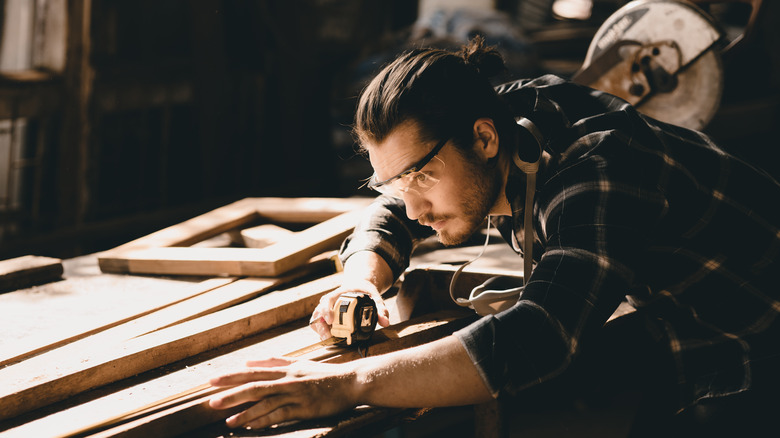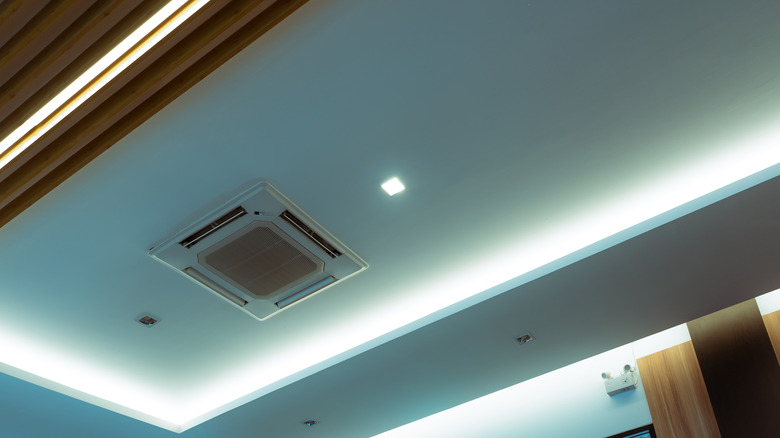How To Repurpose A Closet Into A DIY Wine Cellar
According to City Vino, when Dom Pérignon, a monk, and pioneer of champagne production, took his first sip of sparkling wine and exclaimed, "Come quickly! I am tasting stars!" the whole world changed forever. Not only because wine is undoubtedly a classy, rich drink but also because it's a treasure that has been passed down over centuries to become one of the world's most soulful drinks, via Wine Folly.
It's no wonder people have wine cellars in their homes, and many more desire such privilege, but then there's usually a problem with space. You can always repurpose available space into a wine cellar, like an unused closet. CabinDIY agrees that wine is a delicate and complex substance that needs to stay in a controlled environment to produce the quality desired. While maximizing space, the proper combination of components is key to creating a functional wine cellar. If you are interested, we are here to guide you through the process of repurposing a closet into a DIY cellar.
Prepare and decide on a budget
Before commencing your DIY project, it's always good to have a detailed plan and budget. A wine cellar provides proper conditions for short and long-term wine storage. Indeed, the older the wine, the better the taste, but aging this drink without appropriate facilities is no good, says Designing Idea.
According to Vigilant Superior Design & Craftsmanship, a traditional, functional wine cellar should have horizontal wine racking and storage options, display lighting, vapor barrier, and insulation for the walls, floor, and ceiling to keep it at a humidity of 50% to 70%. It must also have a cooling system to maintain a suitable temperature (usually 40 degrees to 65 degrees), a tabletop for serving and decanting wine, decorative components, fancy wine room doors, and a whole variety of wine! Per the cellar's cooling, The Wine Square suggests a self-contained cooling system if you're new to this project and on a tight budget.
Insulate the walls
Your wine cellar should mimic the moist, dark, and cool conditions of the historic wine caves at Del Dotto Winery, per The Napa Wine Project. It must also be insulated and barred from losing vapor to produce these cave-like conditions consistently. Remove the old drywall and use a polyurethane vapor barrier to cover the ceiling, walls, and floor. After, install the insulation, most preferably a high R-value insulation, to facilitate temperature consistency.
You could top it off with a moisture-stable wall finish. Vigilant Superior Design & Craftsmanship used plywood as a base to securely add their decorative wood paneling. Other types of wood you could use include red cedar boards and smooth tile backer boards like Wonderboard and Hardiebacker boards, designed specifically for wet environments, via Homenish. Avoid using gypsum at all costs. A cooling system without vapor barriers and insulation will cause the temperature in the wine cellar to fluctuate, per CabinDIY. This occurrence leads to waste and unnecessary expenditure on electricity.
Construct your wine racks and storage options
The market is composed of many creative wine storage options. By equipping your wine cellar with various styles and types of wine racks, you will create a flexible and versatile wine storage system, according to Vinotemp. An ideal wine rack is designed with horizontal storage racks to ensure good wine-cork contact. If the wine is stored vertically, the cork may dry out and crumble over time, causing air to find its way in. Horizontal storing solves this problem and makes the sediments form on the sides of the bottle instead of the opening, via Designing Idea.
After adding your wall finishing, assemble the racks and attach them to studs or anchors, so they don't tip over since that would be tragic. Vigilant Superior Design & Craftsmanship also suggests adding a tabletop and some wine glass storage for serving wine. Beautifying your wine cellar with decorations isn't a bad idea, too.
Install a cooling system and fixtures
Air through a window or conditioning through ducts is not the best way to cool your wine cellar consistently. Central air conditioning ducts tend to lower humidity levels and can be a challenge to control. Relying on a window isn't the best either because of climate change and the varying seasons. CabinDIY advises investing in cooling systems designed specifically for wine cellars.
There are several types, including the self-contained cooling system — where the condenser, refrigerant, compressor, and evaporator are all in one device. Another type is a split cooling system, which sees its parts purchased separately, via The Wine Square. These cooling systems keep your wine cellar at a constant temperature of 55 degrees Fahrenheit and maintain the proper humidity levels for your wine.
Once that's done, install your desired type of lighting and wine doors. Like Vigilant Superior Design & Craftsmanship noted, most wine cellars use glass doors to tie everything together. And there you have it, your beautiful, DIY wine cellar!




